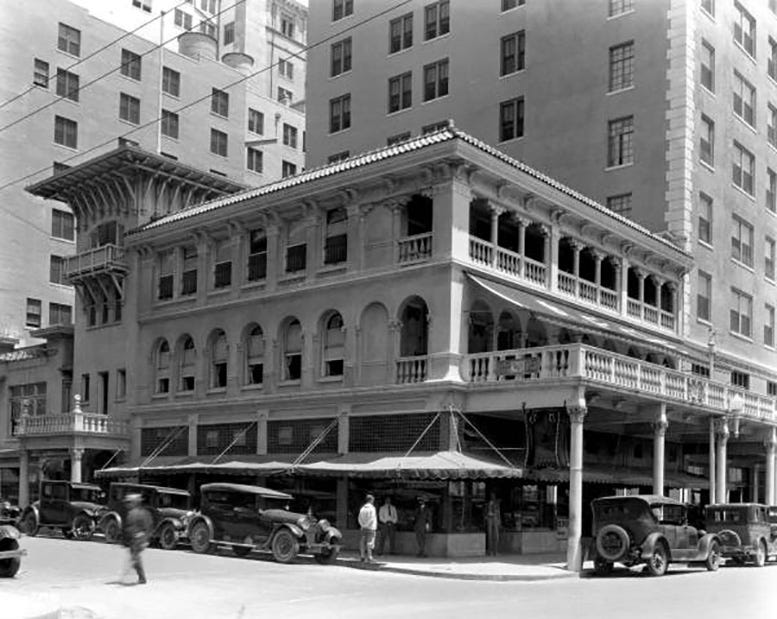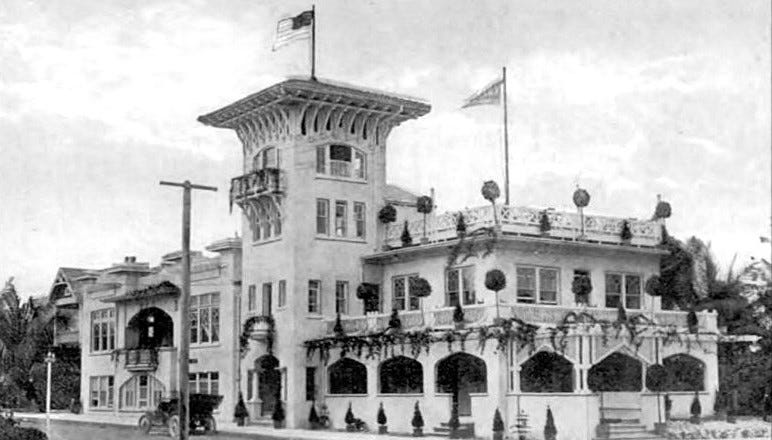History of Miami Elks Lodge 948
One of Miami's oldest fraternal organizations had one of the most ornate buildings in downtown Miami at the corner of NE Third Avenue and Flagler Street. This is the story of the Elks Lodge #948.
Although the club does not meet in its original location, the Benevolent and Protective Order of Elks (B.P.O.E.) #948 is one of the oldest fraternal organizations in Miami. The organization is referred to as the “Elks Lodge”. The club currently operates at 10301 SW 72nd Street in Miami.
Within the first decade of incorporation, the early pioneers of Miami looked to national fraternal organizations to provide camaraderie and civic spirit to the young city. If Miami were to be taken seriously as a metropolitan area, the notoriety offered by national fraternal organizations provided city organizers the credibility they sought. The Elks Lodge was one of the organizations that took root in early Miami.
The Start of Elks Lodge Chapter 948
While the Miami chapter of the Elks Lodge was not the first fraternal organization in early Miami, it has stood the test of time. Chapter 948 of the Elks Lodge was officially established on July 13, 1905. The lodge did not have its own building until a few years later, but thrived in its first several years.
The lodge’s club room was originally located in the Townley Building at 301 Twelfth Street. This would have been at the west corner of Flagler Street and NE First Avenue in today’s address scheme. The Elks occupied the top floor of the building.
The Townley Brothers operated the first drug store in Miami from two locations. They had a branch in Julia Tuttle’s Hotel Miami. However, the main branch of the drug store operated out of the same building that the Elks rented for their club room. In July of 1897, the Townleys abandoned their branch in the Hotel Miami.
The Elks Lodge was located at the Townley Building for a little over a year when it experienced a damaging hurricane. The seventy five mile per hour hurricane hit on October 18, 1906. It did significant damage to the building. Part of a wall to the building had been blown off. The Elks club room experienced significant water damage. Buildings in 1906 were not built to withstand hurricane force winds.
Elks Lodge Gets Their Own Home
After operating out of the Townley Building for five years, the Elks Lodge purchased a lot located at the northeast corner of Flagler Street and NE Third Avenue in 1910. The Elks erected a beautiful Moorish style building and moved into their new location in roughly 1912. The new Elks Lodge stood alone at its corner until development caught up to the area just a few years later.
The lessons of the 1906 hurricane were not forgotten by the architect of the new Elks Lodge. The building was fortified with reinforced concrete to ensure that it would fare better in the next hurricane.
During World War I, the Elks turned over a portion of their building to the Red Cross. It was also a popular place for tourists to visit during the winter season in Miami.
In 1917, the McAllister Hotel was constructed directly east of the lodge. The hotel was built by a wealthy widow by the name of Emma Cornelia Hatchett McAllister. However, McAllister ran out of money in 1919 after only seven stories were complete. New owners took over and completed the hotel.

At ten stories in height, the hotel was the tallest building in Miami until 1925. The hotel stood at Flagler Street and Biscayne Boulevard until it was razed in 1988.
In 1923, the Elks Lodge was remodeled and expanded. The first floor was commercialized in order to generate revenue for the club. The membership dues were not adequate to meet the club’s debt and expenses.
The club leased space to the criminal court of record in 1925 when the new Dade County Courthouse was under construction. The court was only at the Elks Lodge for a short period and moved to one other temporary location prior to moving into the new courthouse in 1928.
Revenue generated by renting the ground floor provided needed funds for the club’s operating costs. In addition, the Elks used revenue from rents to begin a fund for the lodge’s ministration to the needy.
The downtown location served the club very well through the 1950s. However, by the latter part of the decade, the club felt downtown Miami was getting too crowded and decided to move to a quieter part of town.
Keep reading with a 7-day free trial
Subscribe to Miami History to keep reading this post and get 7 days of free access to the full post archives.




